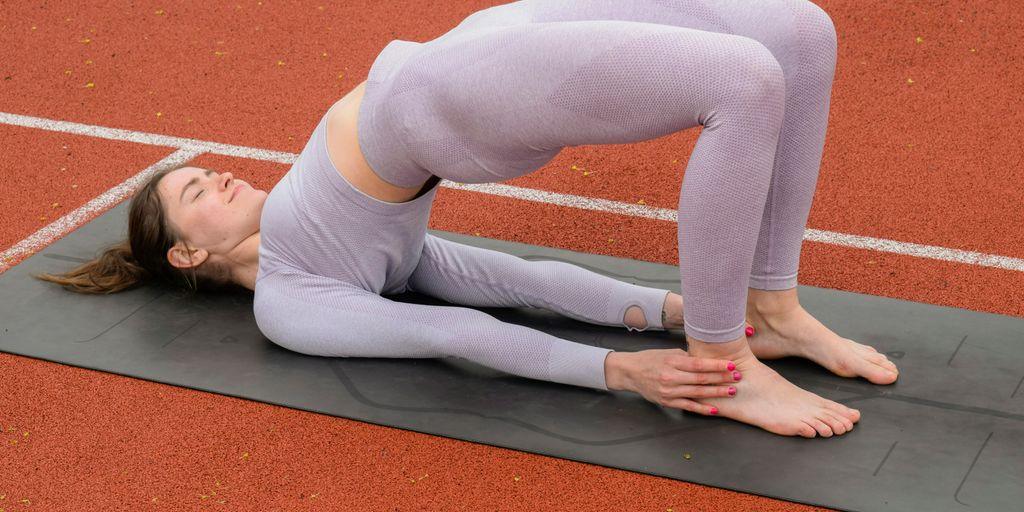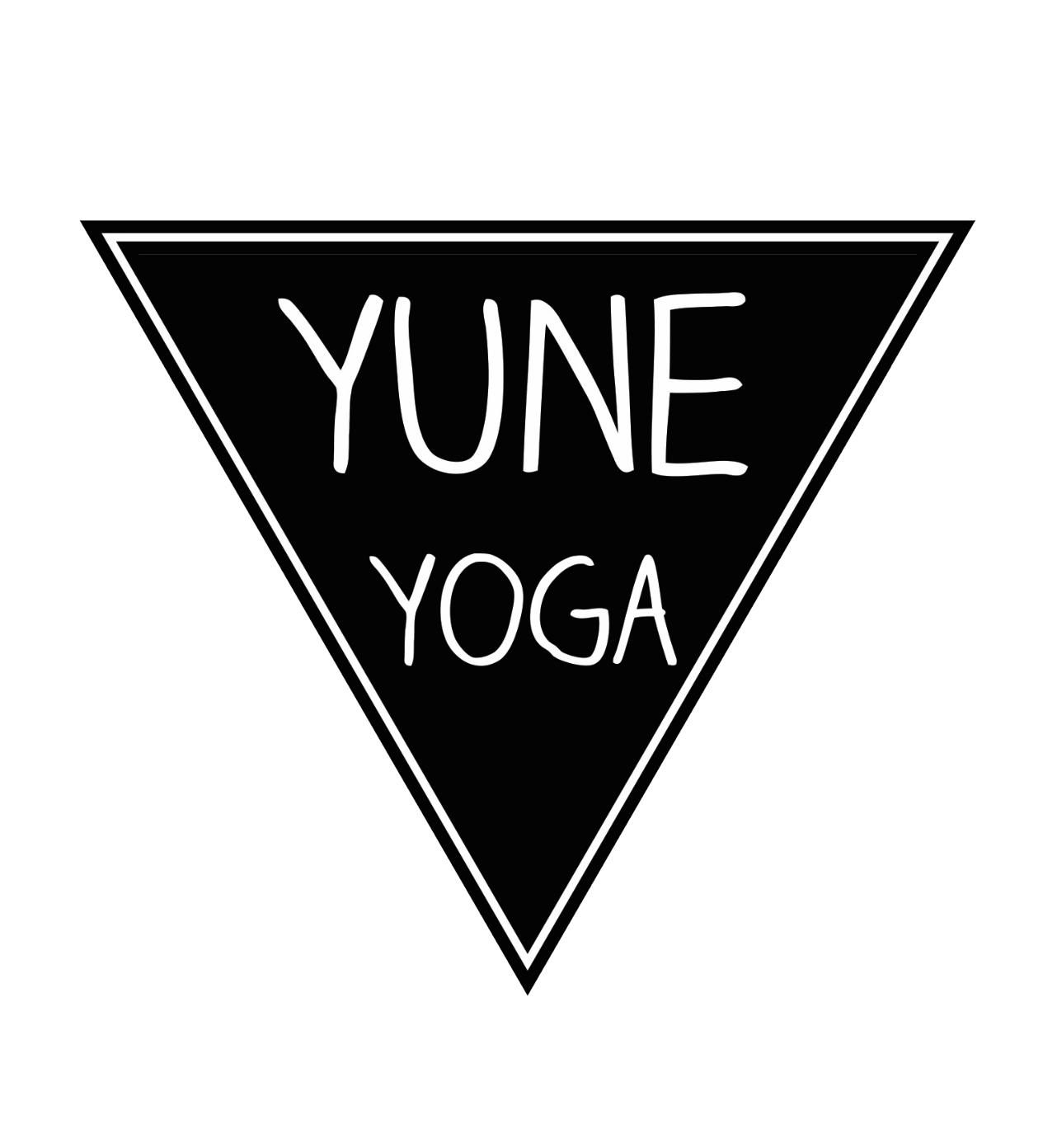
Unlock Your Mobility: Essential Hip Opening Exercises for Daily Wellness
Ever feel like your hips are glued in place? It's a pretty common issue, whether you're sitting a lot or always on the go. Stiff hips can make daily stuff harder and even mess with your workouts. But good news: adding some hip opening exercises to your routine can make a big difference. It's not just about feeling better; it's about moving better, too. Let's get into how these simple moves can help you feel more open and free.
Key Takeaways
- Tight hips can cause problems with how you walk and stand, and even affect your spine.
- Regular hip opening exercises can make your movement range better and reduce aches.
- There are hip opening exercises for everyone, from easy stretches to more advanced moves.
- You can fit hip opening into your day with quick routines, before workouts, or for recovery.
- Focus on breathing and use props to get more out of your hip opening practice.
Understanding Hip Tightness
It's super common for people to experience tight hips, but many don't realize the extent of its impact. Let's break down why this happens and why it's worth addressing.
Why Hips Get Tight
Hip tightness can stem from a bunch of different things. One of the biggest culprits is simply sitting for long periods. Think about it: desk jobs, long commutes, even just chilling on the couch. All that time with your hips flexed can cause the muscles around them to shorten and tighten up. Other causes include:
- Lack of stretching: If you're not regularly stretching your hip flexors, they're going to get stiff.
- Certain exercises: Activities like running or cycling, while great for cardio, can also contribute to tight hips if you don't balance them out with stretching. Hip flexor exercises are important.
- Poor posture: Slouching or having bad posture can put extra strain on your hips, leading to tightness.
Impact of Stiff Hips on Daily Life
Tight hips aren't just a minor annoyance; they can actually mess with your daily life in some pretty significant ways. You might notice:
- Lower back pain: Tight hips can pull on your lower back, causing pain and discomfort.
- Difficulty with movement: Simple things like bending over, squatting, or even walking can become difficult.
- Knee pain: Believe it or not, tight hips can even contribute to knee pain by altering your gait and putting extra stress on your knees.
Ignoring tight hips can lead to a cascade of problems. It's like a chain reaction – one area of tightness can affect other parts of your body, leading to pain and limited mobility. Addressing hip tightness early on can prevent these issues from snowballing.
The Importance of Regular Hip Opening Exercises
So, why bother with hip stretching exercises? Well, the benefits are pretty awesome. Regular hip opening can:
- Improve your range of motion: Looser hips mean you can move more freely and easily.
- Reduce pain: By releasing tension in your hips, you can alleviate pain in your lower back, knees, and even ankles.
- Boost athletic performance: Whether you're a serious athlete or just enjoy recreational activities, flexible hips can improve your performance and reduce your risk of injury.
Basically, taking care of your hips is an investment in your overall well-being. It's about more than just flexibility; it's about feeling good and moving well throughout your day.
Benefits of Consistent Hip Opening
It's easy to underestimate how much tight hips can affect your whole body. Making hip opening exercises a regular thing can really change how you feel and move. It's not just about flexibility; it's about overall well-being.
Enhanced Mobility and Range of Motion
The most obvious benefit is a boost in how freely you can move. Think about it: tight hips restrict your natural movement patterns. Regular hip opening exercises help loosen things up, allowing for a greater range of motion. This means everyday activities, like bending to pick something up or reaching for a high shelf, become easier and less of a strain. Plus, it helps with more complex movements during exercise or sports. You might find that you can squat deeper, run with more ease, or even just walk with a more fluid gait. It's all connected!
Reduced Pain and Discomfort
Tight hips can be a sneaky source of pain. They can contribute to lower back pain, knee pain, and even ankle problems. When your hips are tight, other parts of your body have to compensate, leading to strain and discomfort. By regularly opening your hips, you can alleviate some of this pressure and reduce pain. It's like taking the load off other joints and muscles, allowing them to function properly. Think of it as preventative care for your whole lower body. You might even find that headaches and neck tension improve as your posture gets better with more flexible hips. Consider using a yoga and stretching strap to help you get deeper into those stretches.
Improved Athletic Performance
For athletes, hip mobility is a game-changer. Whether you're a runner, a weightlifter, or play team sports, having flexible hips can significantly improve your performance. It allows for more efficient movement, better power transfer, and a reduced risk of injury. Think about a runner with tight hips: they might have a shorter stride and be more prone to strains. But with open hips, they can lengthen their stride, improve their speed, and reduce their risk of injury. Similarly, in weightlifting, hip mobility is crucial for proper form and power in exercises like squats and deadlifts. It's all about maximizing your body's potential.
Incorporating hip-opening exercises into your routine isn't just about stretching; it's about improving your overall quality of life. It's about moving with more ease, experiencing less pain, and performing at your best. It's a small investment of time that can yield big rewards.
Essential Hip Opening Exercises for All Levels
It's easy to get stuck in a rut doing the same exercises. But when it comes to hip mobility, variety is key! We're going to explore some hip opening exercises that are suitable for everyone, no matter your current fitness level. From gentle stretches to more challenging routines, there's something here for you. Remember to listen to your body and modify as needed. Let's get started!
Beginner-Friendly Stretches
If you're new to hip opening, start with these gentle stretches. They're designed to increase flexibility and range of motion without putting too much stress on your joints. Focus on controlled movements and deep breathing.
- Butterfly Stretch: Sit with the soles of your feet together and gently press your knees towards the floor. Hold for 30 seconds.
- Supine Knee to Chest: Lie on your back and bring one knee towards your chest, holding it with your hands. Hold for 30 seconds and repeat on the other side.
- Figure Four Stretch: Lie on your back, bend your knees, and cross one ankle over the opposite knee. Gently pull the uncrossed thigh towards your chest. Hold for 30 seconds and repeat on the other side.
These stretches are a great way to start improving hip mobility and can be done daily.
Intermediate Hip Mobility Routines
Ready to take things up a notch? These routines involve more dynamic movements and deeper stretches. Make sure you've warmed up your muscles before attempting these.
- Low Lunge: Step one foot forward into a lunge, keeping your front knee over your ankle. Gently push your hips forward, feeling the stretch in your hip flexor. Hold for 30 seconds and repeat on the other side.
- Pigeon Pose (Modification): Start on your hands and knees, then bring one knee towards your wrist on the same side. Angle your shin towards the opposite wrist. Lower your hips towards the floor, keeping your back leg straight. If this is too intense, stay on your hands or forearms. Hold for 30 seconds and repeat on the other side.
- Hip Circles: Stand with your feet shoulder-width apart and place your hands on your hips. Slowly rotate your hips in a circular motion, first clockwise and then counterclockwise. Do 10 repetitions in each direction.
Remember, it's okay to modify these stretches to fit your body's needs. If you feel any sharp pain, stop immediately.
Advanced Techniques for Deeper Release
For those with more experience, these techniques can help you achieve a deeper release in your hips. These require more body awareness and control.
- Pigeon Pose (Full): From the modified pigeon pose, try to lower your hips completely to the floor. If your hips don't reach the floor, use a blanket or cushion for support. Hold for 1 minute and repeat on the other side.
- King Pigeon Pose (Attempt): This is a challenging backbend and hip opener. Only attempt this if you have good flexibility and body awareness. From pigeon pose, bend your back knee and reach back with your hand to grab your foot. Gently pull your foot towards your head, deepening the stretch. Hold for 30 seconds and repeat on the other side. (Consult a certified professional before attempting this.)
- Deep Squat with Rotation: Squat as low as you can while keeping your feet flat on the floor. Bring your hands together in front of your chest and gently twist your torso from side to side, using your elbows to push your knees outward. Do 10 repetitions on each side.
These advanced techniques are designed to increase hip flexibility and should be approached with caution. Always listen to your body and avoid pushing yourself too hard.
Incorporating Hip Opening into Your Routine
It's easy to think of hip opening as something you only do before or after a workout, but the truth is, your hips benefit from regular attention. Think of it like brushing your teeth – a little bit each day goes a long way. Let's explore how to weave hip-opening exercises into your daily life.
Quick Daily Sequences
These don't have to be long, drawn-out sessions. Even five minutes can make a difference. The key is consistency. Here are some ideas:
- Morning Mobility: Start your day with a few gentle stretches like knee-to-chest or figure-four stretches while still in bed. This can help loosen things up after a night of sleep.
- Desk Breaks: If you sit for long periods, take short breaks every hour to do some standing hip circles or leg swings. This combats stiffness from prolonged sitting.
- Evening Wind-Down: Before bed, try a reclined butterfly pose or a gentle twist to release tension built up throughout the day.
Pre-Workout Hip Preparation
Before any workout, especially those involving squats, lunges, or running, it's important to prep your hips. Dynamic stretches are ideal here. These movements increase blood flow and range of motion, reducing the risk of injury. Consider these:
- Leg swings (forward, backward, and sideways)
- Hip circles
- Walking lunges with a twist
These exercises help to improve your lower body's range of motion.
Post-Workout Recovery Stretches
After a workout, static stretches are beneficial for cooling down and improving flexibility. Hold each stretch for 20-30 seconds. Good options include:
- Pigeon pose (or a modified version)
- Butterfly stretch
- Standing hamstring stretch
Incorporating hip-opening exercises into your routine doesn't require a huge time commitment. Even small, consistent efforts can lead to significant improvements in mobility, comfort, and overall well-being. Listen to your body, and adjust the intensity and duration of the exercises as needed.
Key Hip Opening Exercises to Try
Kneeling Three-Way Lunge
The Kneeling Three-Way Lunge is a great way to target different parts of your hips and improve flexibility. It's like a regular lunge, but with a twist (literally!).
- Start in a kneeling position with one leg forward in a lunge.
- First, lean forward to stretch the front of your hip. Hold for a few breaths.
- Next, twist your torso towards your front leg to target the side of your hip. Hold.
- Finally, twist away from your front leg to stretch the opposite side. Hold. Repeat on the other side. This is a great way to address tight hip flexors.
Twisting Runner's Lunge
This exercise builds upon the standard runner's lunge by adding a twist, which helps to deepen the stretch and target the outer hip muscles. It's a fantastic way to increase mobility and release tension.
- Begin in a runner's lunge position, with one foot forward and the other leg extended behind you.
- Place the hand opposite your front leg on the floor inside your front foot.
- Twist your torso towards your front leg, reaching your other arm towards the ceiling.
- Hold this position for several breaths, feeling the stretch in your hip and torso. Repeat on the other side.
Straddle Forward Fold
The Straddle Forward Fold is a simple yet effective way to stretch the inner thighs and hips. It can be modified to suit different levels of flexibility.
This pose is all about finding your edge. Don't force anything, and listen to your body. If you feel any sharp pain, back off slightly. The goal is to feel a gentle stretch, not to push yourself to the limit.
Here's how to do it:
- Sit on the floor with your legs extended out to the sides in a wide "V" shape.
- Keep your knees straight, but not locked.
- Slowly lean forward from your hips, keeping your back as straight as possible.
- Reach your hands towards your feet or the floor in front of you.
- Hold the stretch for 20-30 seconds, breathing deeply. Remember to consult with a physical therapist if you have any concerns.
Optimizing Your Hip Opening Practice
So, you're doing your hip openers – great! But are you really getting the most out of them? It's not just about going through the motions. Let's look at how to make your hip opening practice even better.
Breathing Techniques for Deeper Release
Don't underestimate the power of your breath. It's easy to hold your breath when a stretch gets intense, but that's the opposite of what you want. Instead, focus on slow, deep breaths. Inhale deeply to create space, and exhale fully to release tension. Try to match your breath to the movement. For example, inhale as you prepare for a stretch, and exhale as you move deeper into it. This helps calm your nervous system and allows your muscles to relax more fully. It's like telling your body it's safe to let go. I've found that box breathing (inhale for 4, hold for 4, exhale for 4, hold for 4) can be especially helpful.
Using Props for Support and Depth
Props aren't just for beginners! They can help you access deeper stretches and maintain proper alignment, no matter your experience level. Blocks can be used to bring the floor closer to you in poses like seated forward folds, making the stretch more accessible. A strap can help you reach your feet in poses like reclining hand-to-big-toe pose. Even a rolled-up blanket can provide support under your knees or hips, making the stretches more comfortable and sustainable. Experiment with different props to see what works best for your body. Here's a quick guide:
| Prop | Use | Benefit |
|---|---|---|
| Blocks | Under hands or hips | Increases reach, supports alignment |
| Strap | Around feet or legs | Extends reach, deepens stretch |
| Blanket | Under knees or hips | Provides cushioning, reduces strain |
Listening to Your Body's Signals
This is probably the most important tip of all. Pay attention to what your body is telling you. Hip opening can sometimes improve hip mobility, but it's not about pushing yourself to the point of pain. Sharp, stabbing pain is a sign to back off immediately. Mild discomfort or a feeling of stretching is okay, but respect your limits. Every body is different, and some days you'll be more flexible than others. Don't compare yourself to others, and don't force anything. It's better to do a gentle stretch consistently than to injure yourself trying to go too far, too fast. Remember, the goal is to feel better, not worse!
It's easy to get caught up in the idea of achieving a certain pose or level of flexibility. But the real benefit of hip opening comes from the process of connecting with your body, releasing tension, and improving your overall well-being. Be patient, be kind to yourself, and enjoy the journey.
Beyond Physical Benefits: Emotional Release
Hips as a Storage Vessel for Stress
It's interesting how our bodies hold onto things, isn't it? Turns out, the hips are often a major storage spot for stress and tension. Think about it: when you're stressed, do you clench your jaw, tighten your shoulders, or maybe even feel it in your lower back? All of these reactions can contribute to tightness in the hips over time. This chronic tension can manifest as physical stiffness, but it also has a way of impacting our emotional state.
Mindful Movement for Emotional Well-being
When we start to open up the hips, we're not just stretching muscles; we're potentially releasing stored emotions. It's like unlocking a door to a room we didn't even know existed. Mindful movement, where you pay attention to your body and breath during hip-opening exercises, can be a powerful tool for emotional well-being. It's about being present and noticing what comes up – whether it's a physical sensation, a memory, or an emotion.
Here's how to make your hip-opening practice more mindful:
- Focus on your breath: Inhale deeply and exhale slowly, noticing how your body feels with each breath.
- Pay attention to sensations: Notice any areas of tension or discomfort, and gently work to release them.
- Be present: Avoid getting lost in thought; instead, focus on the present moment and the sensations in your body.
Taking the time to really connect with your body during these exercises can make a huge difference. It's not just about getting flexible; it's about creating space for emotional release and a greater sense of well-being.
Feeling Lighter and Freer
One of the most common things people report after consistently working on their hip flexibility is a feeling of lightness and freedom, both physically and emotionally. It's like shedding a weight you didn't even realize you were carrying. This can translate into feeling more grounded, more confident, and more at ease in your daily life. Plus, when your hips are more open, it can improve your posture and alignment, which can further contribute to a sense of well-being. Consider using a yoga and stretching strap to help you get deeper into the poses.
Make Hip Health a Regular Thing
So, there you have it. Taking care of your hips isn't just for super active people or those with aches. It's for everyone. Adding these simple moves to your day can make a real difference in how you feel, whether you're sitting at a desk or out and about. Just a few minutes can help you move better and feel more comfortable. Give it a try; your hips will thank you.
Frequently Asked Questions
Why do my hips feel tight?
Tight hips often come from sitting a lot, not moving enough, or doing certain exercises over and over. Think about how much time you spend sitting at a desk or in a car. This can make the muscles around your hips get short and stiff.
How do tight hips affect my daily life?
When your hips are tight, it can make everyday things harder. Walking might feel stiff, bending down can be tough, and even just standing can feel uncomfortable. It can also lead to pain in your lower back, knees, or even your ankles.
What are the main benefits of opening my hips?
Doing hip-opening exercises regularly helps your joints move more freely, reduces pain, and can even make you better at sports or other physical activities. It's like oiling a rusty hinge – everything just works smoother.
I'm new to this. Where should I begin with hip-opening exercises?
Start with gentle stretches like a kneeling lunge or a butterfly stretch. Don't push too hard at first. As you get more flexible, you can try deeper stretches. Listen to your body and only go as far as feels comfortable.
Do I need any special equipment for these exercises?
You don't need much! A yoga mat can make it more comfortable, and sometimes a pillow or block can help support you in certain stretches. But mostly, just your body and a little space are enough.
How often should I do hip-opening exercises?
Aim for at least a few times a week, even if it's just for 5-10 minutes. Doing a little bit often is much better than doing a lot once in a while. You can even add a few stretches to your warm-up or cool-down from other workouts.


